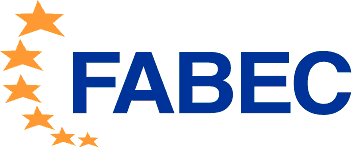FABCE – FABEC ANSP Joint Declaration to deepen interFAB cooperation in support of the Single European Sky

Air Navigation Service Providers from Functional Airspace Block Central Europe (FAB CE) and Functional Airspace Block Europe Central (FABEC) today signed a Joint Declaration to deepen cooperation with the aim of enhancing Air Traffic Management (ATM) performance. The adjacent functional airspace blocks already collaborate on many existing projects, including improved descent and ascent profiles around major airports, optimising traffic flow in congested airspace, harmonised procedures for the delivery of aeronautical information management data and training activities. The Joint Declaration frames this longstanding cooperation and identifies six key areas that will accelerate progress towards the creation of a Single European Sky to be validated in the light of traffic recovery.
FAB CE CEO Committee Chairperson and Managing Director of Austro Control Valerie Hackl commented: “Traffic downturn as a result of COVID-19 provides European ANSPs with an opportunity to work towards the long-term goals of the Single European Sky and continuing to make cross-border operations as seamless as possible. We look forward to strengthening our lasting collaboration – with a special focus on how to reduce the environmental impact of aviation.”
FABEC Chairman CEO Board and CEO DFS Klaus-Dieter Scheurle said: “FAB CE and FABEC ANSPs already collaborate in many areas, including free route airspace and environmentally friendly arrivals. By signing a Joint Declaration these activities will continue to grow. For us, it is the next step to further enhance InterFAB cooperation – for the benefit of airspace users, passengers and European citizens.””
The Joint Declaration identifies six priority areas for collaboration:
- Single European Sky: Common activities to understand and promote the functioning of ATM;
- Safety: Shared best-practices, new technologies and procedures;
- Airspace structures: Implementation of free route airspace, extended arrivals management and airspace re-sectorisation;
- Capacity management: Increased cooperation to manage volatile traffic demand;
- Training: Continue development of harmonised training protocols;
- Aeronautical Information Management: Continued harmonisation of data sets for cross-border operations and free route operations.

.jpg)



.png)


Comments
There are no comments yet for this item
Join the discussion